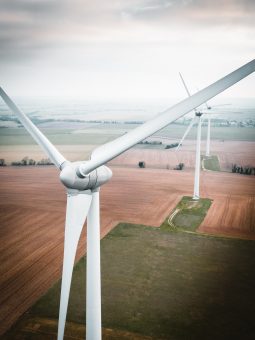
The Renewable Energy Statistics 2024 released by the International Renewable Energy Agency (IRENA) today shows that despite renewables becoming the fastest-growing source of power, the world risks missing the tripling renewables target pledged at COP28. To stay the course, the world will now have to grow renewables capacity at a minimum 16.4 per cent rate annually through 2030.
The unprecedented 14 per cent increase of renewables capacity during 2023 established a 10 per cent compound annual growth rate (2017-2023). Combined with the constant decreasing additions of non-renewable capacity over the years, the trend sees renewable energy on its way to overtake fossil fuels in global installed power capacity.
However, if last year’s 14 per cent increase rate continues, the tripling target of 11.2 Terawatts (TW) in 2030 outlined by IRENA’s 1.5°C Scenario will fall 1.5 TW short, missing the target by 13.5 per cent. Furthermore, if the world keeps the historic annual growth rate of 10 per cent, it will only accumulate 7.5 TW of renewables capacity by 2030, missing the target by almost one-third.
More:
- NEGATIVE BIDDING CONTINUES TO BURDEN OFFSHORE WIND DEVELOPMENT
- FIRST NET-ZERO ACADEMY TO TRAIN 100,000 WORKERS IN THE EU SOLAR PHOTOVOLTAIC VALUE CHAIN
- RENEWABLES AND GRID FLEXIBILITY WOULD SLASH ELECTRICITY PRICES BY A QUARTER BY 2030, BY A THIRD BY 2040
“Renewable energy has been increasingly outperforming fossil fuels, but it is not the time to be complacent. Renewables must grow at higher speed and scale. Our new report sheds light on the direction of travel; if we continue with the current growth rate, we will only face failure in reaching the tripling renewables target agreed in the UAE Consensus at COP28, consequently risking the goals of the Paris Agreement and 2030 Agenda for Sustainable Development”, said IRENA Director-General, Francesco La Camera.
In terms of power generation, the latest data available for 2022 confirmed yet again the regional disparity in renewables deployment. Asia holds its position as leader in the global renewable power generation with 3.749 Terawatt hours (TWh), followed for the first time by North America (1.493 TWh). The most impressive jump occurred in South America, where renewable power generation increased by nearly 12 per cent to 940 TWh, due to a hydropower recovery and a greater role of solar energy.
With a modest growth of 3.5 per cent, Africa increased its renewable power generation to 205 TWh in 2022, despite the continent’s tremendous potential and immense need for rapid, sustainable growth. Acknowledging the urgent need for support and finance, IRENA is advancing the Accelerated Partnership for Renewables in Africa (APRA) initiative and is preparing an investment forum focused on APRA’s member countries later this year.
Source: IRENA



